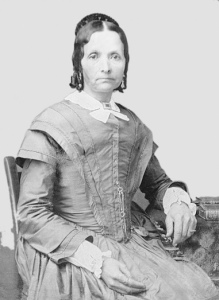
It is time, once and for all, to put the rest the notion that Zion’s Poetess, Eliza R. Snow, was in any way involved in the creation of either the Latter-day Saint hymn “Truth Reflects upon Our Senses,” or the popular gospel song “Life’s Railway to Heaven.” Snow is sometimes mistakenly given credit for writing both hymns, although there in no evidence she wrote either. The confusion has arisen because the two texts share the same tune, composed by Charles Davis Tillman. The words of the refrain, written by M. E. Abbey, are also common to both, further adding to the confusion.
At the popular website The Cyber Hymnal, the entry for “Life’s Railway to Heaven” reads: “The origin of this song is murky. Eliza R. Snow may have written the original lyrics, with M. E. Abbey supplying the chorus. There is a similar poem/hymn by Snow, called ‘Truth Reflects upon Our Senses,’ which Tillman put to this same tune in 1909.” An anonymous Wikipedia entry on Charles Tillman further expands on this idea, stating that Tillman “demonstrated his eclecticism” by publishing Snow’s words with his tune “in an age when being in any way associated with ‘Mormon’ lyrics would have been fraught with market risk for Tillman.”
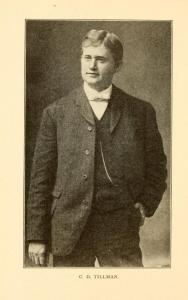
This might make for a fascinating story, but it is simply not true. There is no evidence Tillman ever collaborated with a Latter-day Saint author. In fact, this is in direct contradiction to Tillman’s own account of how his song came to be written, as related to hymnologist Phil Kerr in a 1940 interview: “Some fifty years ago, here in Atlanta, an old Baptist preacher (M. E. Abbey) came to me with a poem…I took the poem to my room, placed it on the organ in front of me. The melody came quickly. We dedicated it to railroad men everywhere.” (Kerr, 144.) The completed song was first published in Tillman’s The Revival in 1891. 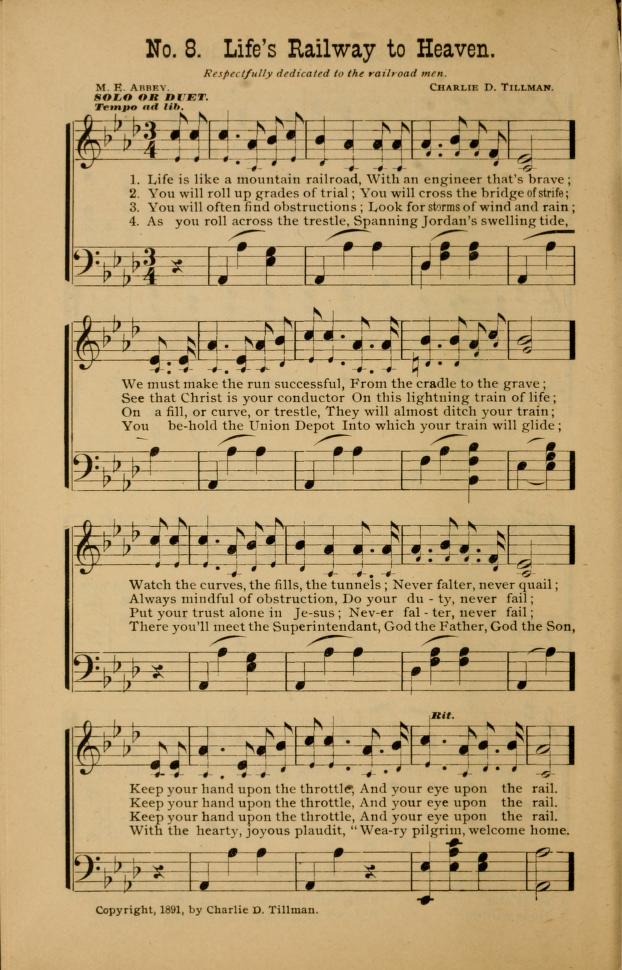 The “old Baptist preacher,” credited in The Revival as M. E. Abbey, is actually Mason Ellis Abbey (1812-1892), who has never before been identified by his full name.
The “old Baptist preacher,” credited in The Revival as M. E. Abbey, is actually Mason Ellis Abbey (1812-1892), who has never before been identified by his full name.
As the owner of the copyright to “Life’s Railway to Heaven,” Tillman granted permission for the use of his tune, but it was not his decision to pair his tune with the words to “Truth Reflects upon Our Senses.” This was done by a Latter-day Saint editor in 1909, for a Latter-day Saint Sunday School song book. As Karen Lynn Davidson, in Our Latter-day Hymns, explains:
In 1909, when the editors of the Deseret Sunday School Songs included this text, they chose a familiar tune that Charles Tillman had written for a text by M. E. Abbey called “Life’s Railway to Heaven.” But this hymn tune continued on with a chorus; the text was too short to fill out the music. The editors needed two more lines of verse to go with the chorus of this tune, and their solution was just to use M. E. Abbey’s original words for the chorus. As a grafted-on addition, they do not correlate particularly well with the verse. (Davidson, 302-303.)
Finding the origins of the words to “Truth Reflects upon Our Senses” has been a little more problematic. The Latter-day Saint hymnal has credited Eliza Snow as author of this hymn for more than a century, but there has never been any proof of her authorship. It was not included in either of the two volumes of poems Snow published during her lifetime, nor can it be found among her extant journal or diary entries. Furthermore, it does not resemble any of her other poems or hymns in either style or language. But perhaps most telling: although the official Latter-day Saint hymnal began including author names in 1856, Snow was first listed as author of these words in 1905, eighteen years after her death.
“Truth Reflects upon Our Senses” was first included in a Latter-day Saint hymnal in 1840, in A Collection of Sacred Hymns for the Church of Jesus Christ of Latter-day Saints, in Europe, an unofficial collection published at Manchester, England by Brigham Young, John Taylor, and Parley P. Pratt. Sometimes referred to colloquially as the “Manchester Hymnal,” this book would later become the official Latter-day Saint hymnal after the martyrdom of the prophet Joseph Smith and the exodus of the saints to the Salt Lake Valley. There is no evidence that Eliza Snow contributed any new hymns to this collection in 1840. Five years earlier two of her hymns had appeared in Emma Smith’s 1835 Kirtland hymnal, and she would contribute at least one more hymn to Smith’s 1841 Nauvoo hymnal. It should be noted that when Emma Smith compiled her two hymnals she actively sought out new contributions from Latter-day Saint writers. Young, Taylor, and Pratt did not; the bulk of new hymns in their collection were composed by Pratt himself, although a few were also contributed by Taylor. (Distance may have been a factor: the majority of church members at this time were in Nauvoo, Illinois)
The eleventh edition of Sacred Hymns and Spiritual Songs (as Young, Taylor, and Pratt’s collection was called beginning with the tenth edition in 1851) was the first official Latter-day Saint hymnal to include author names. Published in 1856 in Liverpool, England, the index included authors and sources for 166 of the 332 published hymns.
Before publication of the twelfth edition in 1863, the following notice was printed in the Millennial Star:
In publishing a new edition of the Hymn-book, (which we hope to do in the
course of another year,) we desire, among other things, to improve the index by
attaching to each hymn the name of its original author, or the source from whence it
was taken. Should any of the Elders, or others, be able to render us any assistance by acquainting us with the name of the author of any hymn which in the present edition has no given authority, we shall be happy to receive it, or indeed any suggestion tending to render the work more correct and complete. (March 22, 1862, 187.)
More than a hundred additional names were added to the index in this 1863 edition, likely as a result of this request.
Another author search was conducted before publication of the fourteenth edition of the hymnal in 1871. This was the first edition to be published at Salt Lake City, and three hymns anonymous in prior editions were first attributed to Eliza R. Snow in this hymnal. Significantly, “Truth Reflects upon Our Senses” was not among these.
A further attempt at identifying sources for anonymous hymns began in 1903, when an extensive search was undertaken by the staff at the Church Historian’s Office, led by newly appointed Church Historian Anthon H. Lund, as part of a larger effort of cataloging and collecting information, books, and other miscellaneous items pertaining to the history of the Church. A list of more than fifty hymns was printed in the Church-owned Deseret News, with a request for members to send information regarding their authorship or origin to the Historian’s Office at Salt Lake City. Staff at the Historian’s Office also wrote letters to individuals in an attempt to identify as many author names as possible. When the twenty-fourth edition of Sacred Hymns and Spiritual Songs was published in December 1905, Eliza R. Snow’s name was printed below the hymn “Truth Reflects upon Our Senses.” The source of this attribution is unknown.
This hymn, however, has since been found in several non-Latter-day Saint sources. It appears on an undated broadside in the archives of the John Hay Library at Brown University, with the first line slightly altered to “When truth reflects upon the senses,” and authorship credited to “Elder Wm. Laues.”
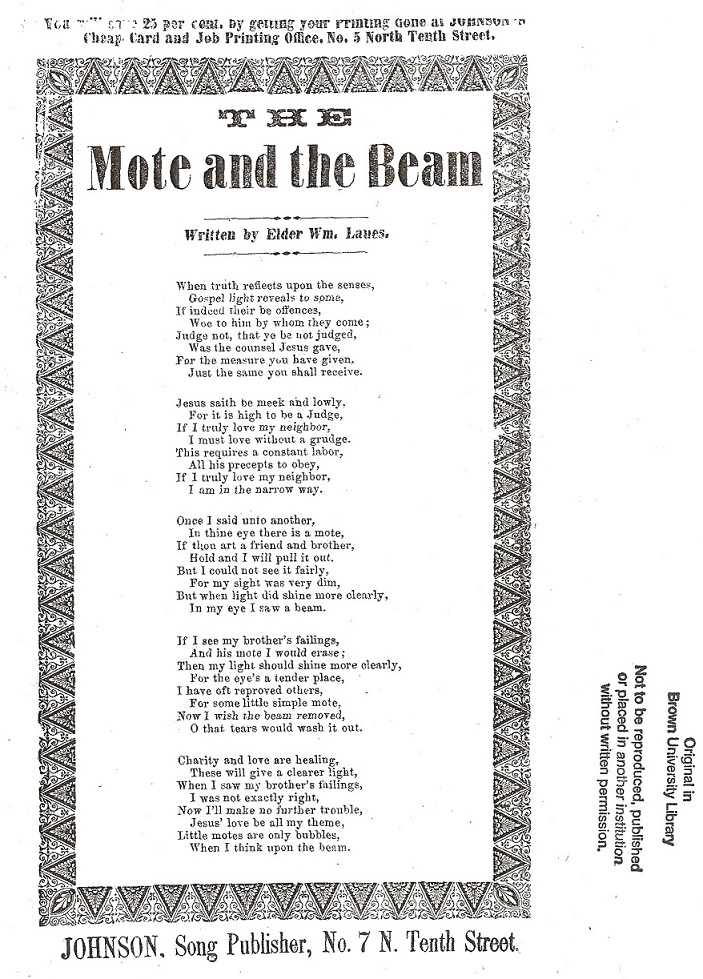
A different authorship attribution, “S. H.,” is given in two Protestant hymnals from the 1860s: Horace Waters’ Sabbath School Bell No. 2 (1860) and Levi Coonley’s Hymns of Progress (1864).
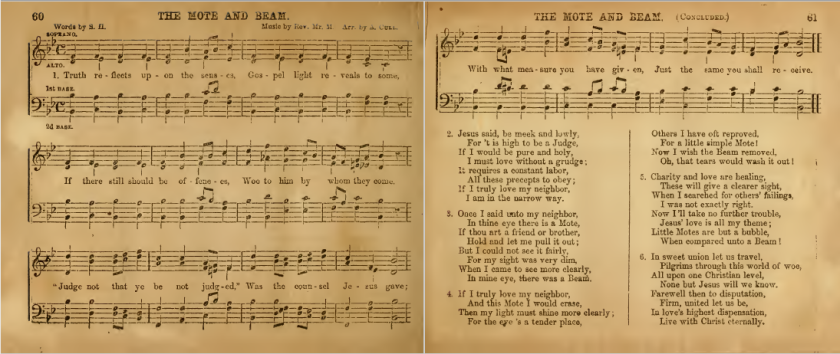
More extensive revisions of this text have recently been discovered, all with authorship uncredited. The earliest found thus far is from the Reformed Methodist Hymn Book, published in 1833:
Since the light of Christ commenced
….Purest love’s reveal’d to some;
If there still should be offences,
….Wo to him by whom they come.
“Judge not, that ye be not judged,”
….Was the counsel Christ did give;
And the measure we have given,
….Just the same we must receive. (Gillmore and Shepherd, 356.)
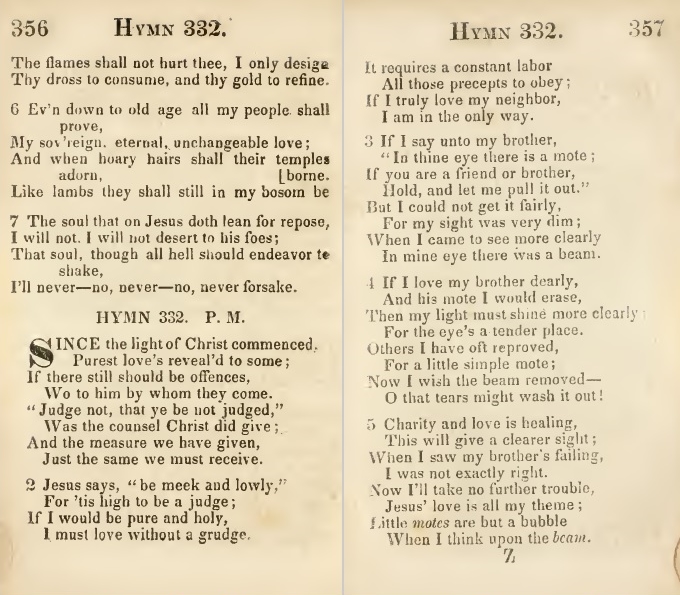
Some hymnals give a slightly altered form of the above. Another version commences:
Christian love has no pretences
….Kind to all, severe with some;
If there still should be offences,
….Woe to him by whom they come;
“Judge not that ye be not judged,”
….Is the counsel Jesus gave:
And the measure you have given,
….Just the same you shall receive. (Gorham, 159; Selby, 92.)
Still another form of the text begins:
As the present truth advances
….Purest love’s revealed in some—
If there still should be offences,
….Woe to him by whom they come. (Advent Review, 174.)
It is impossible to say which, if any, of these variations of the text is the original, or from what source it was borrowed by the Latter-day Saints.
Notes:
*The misattribution of “Life’s Railway to Heaven” to Eliza Snow, now found on many different websites, is but one example of how easily misinformation spreads when writers, in their haste or laziness, copy information from other sources without verifying facts.
*The same Wikipedia article claiming Charles Davis Tillman collaborated with Snow on “Life’s Railway to Heaven,” also erroneously claims that Tillman borrowed his tune from George F. Root’s song “The Vacant Chair.” This misinformation can also be found in several books, including one published by National Geographic. As with “Truth Reflects upon Our Senses,” the confusion with “The Vacant Chair” has arisen because these words are sometimes sung to the tune of “Life’s Railway to Heaven”; however, the tunes composed by Root and Tillman are nothing alike. For a comparison of the two songs, see “The Vacant Chair” and “Life’s Railway to Heaven.”
*For more information on the Latter-day Saint’s use of Tillman’s tune, see Deseret Sunday School Songs (1909), hymn no. 246, “Truth Reflects Upon Our Senses.” At the bottom of the page is written: “Used by permission of Charlie D. Tillman, owner of the copyright.”
*Mason Ellis Abbey is confirmed as as the author of the words to “Life’s Railway to Heaven” in an obituary for Abbey’s son-in-law, Dr. B. M. Woolley. (See “Dr. Woolley Dies Sunday Morning,”Atlanta Constitution, October 29, 1917, 1)
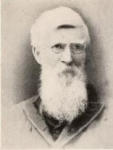
Mason Ellis Abbey, the son of Richard and Dolly (Ellis) Abbey, was born on July 4, 1812, in Franklin, Pennsylvania. He resided variously in Mississippi, Arkansas, Iowa, Tennessee, and Georgia. Throughout his life he was employed in several different occupations including clerk, book agent, dry goods dealer, and for a short time he was the editor of the Columbus Democrat in Columbus, Mississippi. After his baptism in 1846 he became a minister. He was married in 1837 to Harriet M. Allen in Natchez, Missisippi. He was married in 1850 to Harriet Rebecca Newland in Van Buren, Arkansas. Abbey was the father of ten children. He died in Atlanta, Georgia on February 21, 1892. (Some sources give the date of his death as February 20, 1892). Abbey’s poem “Life’s Railway to Heaven” appears to be based on another poem, “The Faithful Engineer,” by Will Shakespeare Hays. Hays’ poem appeared in the Brotherhood of Locomotive Firemen and Enginemen’s Magazine, March 1886, page 143, five years before “Life’s Railway to Heaven” was first published. Hays renamed his poem “Old Hayseed’s Railroad Idea of Life” when republished in his Poems and Songs (1895), 91-93.
*“Manchester Hymnal” appears to be a fairly recent nickname for the 1840 hymnal compiled by Brigham Young, John Taylor, and Parley P. Pratt in Manchester, England. I have found no evidence that the early saints ever referred to it by this name. It is, however, listed in some nineteenth century sources as the “European edition.”
*In the April 2, 1903 Deseret Evening News, under the heading “Who Knows Them?” was published a list of fifty-seven hymns of unknown authorship. A few weeks later, presumably after several responses had been received, this list was updated, dropping ten of the listed hymns and adding another six. This new list was published in the Deseret Evening News on April 18, 1903, and again on April 20, 1903.
*For further information on the cataloging efforts of the Church Historian’s Office, see “The Old Timers,” Deseret Evening News, April 21, 1903, 2; and “Church Publications,” Deseret Evening News, April 25, 1903, 4.
*The older hymns first credited to Snow in 1871 are: “Great is the Lord; ‘tis good to praise” and “The glorious day is rolling on,” both originally published in 1835 and erroneously credited to W. W. Phelps in the 1863 edition, and “The time is far spent,” first published in the 1841 Nauvoo hymnal.
*For additional variations of “Truth Reflects upon the Senses,” see the following: “The Beam in the Eye” in A. S. Jenks and D. Gilkey, The Chorus; or, a Collection of Choruses and Hymns, Selected and Original, 4th ed., (Philadephia: A. S. Jenks, 1858), 230-231; “Mote and Beam” in Joseph Hillman, The Revivalist (Troy, New York: n. p., 1869), 155; “Since Meridian Light Commences” in G. W. Henry, The Golden Harp (Auburn, New York: William J. Moses, 1856), 30-31.
Sources:
“Life’s Railway to Heaven,” The Cyber Hymnal, accessed June 18, 2017; Wikipedia contributors, “Charles Davis Tillman,” Wikipedia, The Free Encyclopedia, last modified April 5, 2018; “Truth Reflects Upon Our Senses,” Deseret Sunday School Songs (Salt Lake City: Deseret Sunday School Union, 1909), no. 246; Karen Lynn Davidson, Our Latter-day Hymns: the Stories and the Messages, rev. and enl. (Salt Lake City: Deseret Book, 2009), 302-303; Phil Kerr, Music in Evangelism 4th ed. (Glendale, Calif: Gospel Music Publishers, 1954), 144; Cleveland Abbe and Josephine Genung Nichols, Abbe-Abbey Genealogy: in Memory of John Abbe and His Descendants (New Haven, Conn.: The Tuttle, Morehouse & Taylor Company, 1916), 127; Jill Mulvay Derr and Karen Lynn Davidson, eds., Eliza R. Snow: The Complete Poetry (Provo and Salt Lake City, Utah: Brigham Young University Press and University of Utah Press, 2009); “Notice,” Millennial Star, March 22, 1862, 187; “A new edition of the hymn book,” Deseret News, February 22, 1871, 8; “Who Knows Them?” Deseret Evening News, April 2, 1903, 5; “Who can give the names?” Deseret Evening News, April 2, 1903, 4; C. Gillmore and P. Shepherd, Reformed Methodist Hymn Book, 3rd ed. (Geneva, New York: J. Bagert, 1833), 356; B. W. Gorham, Choral Echoes from the Church of God in All Ages (Boston: Henry V. Degen, 1864), 159; William James Selby, The Old Paths; or Ancient Sacred Harmonies (Utica, New York: E. E. Roberts, 1869), 92; “The Mote,” Advent Review, and Sabbath Herald (Battle Creek, Mich.), October 16, 1860, 174, accessed December 15, 2010.